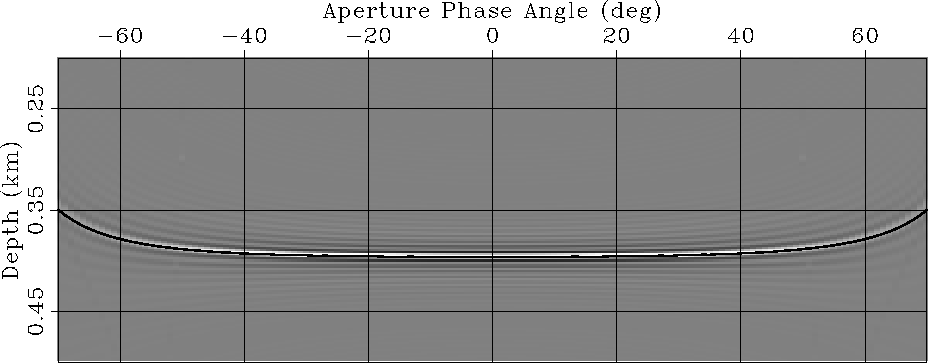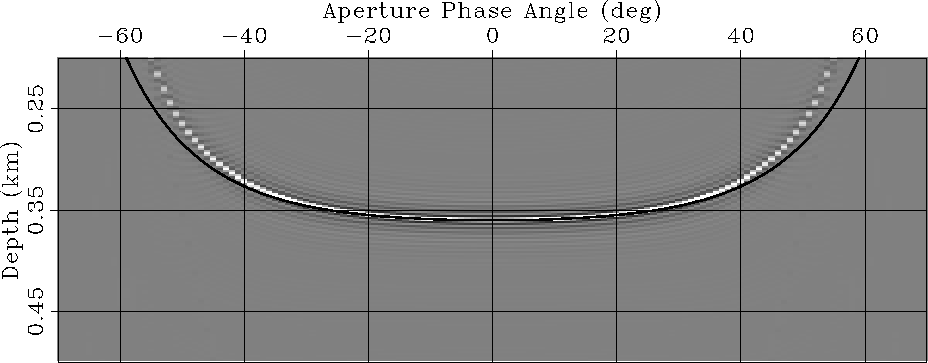|
Aniso-rmo-rho.99-flat
Figure 4 ADCIGs obtained when a constant anisotropic velocity was perturbed by |  |
The two inaccurate migration velocity models we use are anisotropic migrations using uniform perturbations equal to 0.99 and 0.9. The ADCIGs obtained from the different migration velocities are illustrated in figures 4 and 5. Superimposed are the predicted RMO curves derived from the linearized expression. The figures demonstrate the accuracy of the linearized approximation for small perturbations.
|
Aniso-rmo-rho.99-flat
Figure 4 ADCIGs obtained when a constant anisotropic velocity was perturbed by |  |
|
Aniso-rmo-rho.9-flat
Figure 5 ADCIGs obtained when a constant anisotropic velocity was perturbed by |  |